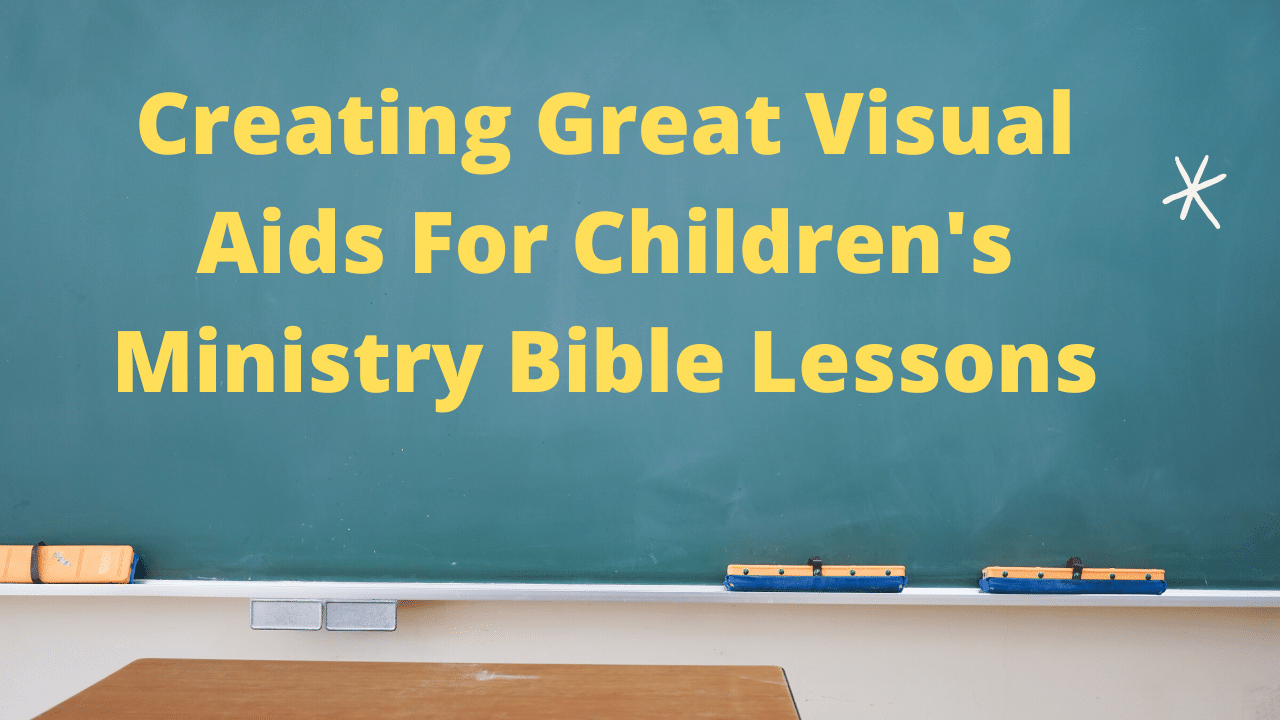This article is about different ideas for visual aids and making it interactive as you communicate what happens, what it means and how it applies.
Visual aids are a non-negotiable minimum for any talk for children.
That’s because we all remember much more of what we see and hear than what we just hear. And some level of interaction is also pretty crucial because we remember even more of what we do than what we see and hear.
Let’s divide presentation ideas into 3 main categories…all conveniently starting with ‘p’:
- Pictures
- Props
- People
First Pictures.
Pictures are probably the most straightforward approach. They’re particularly good at supporting knowledge of what happens in a Bible passage.
There are some fantastic free resources on the internet. There are also some superb ones which you pay for.
Most of these sites produce images in sets covering a complete Bible passage. You can print them or insert them into a slideshow depending on the facilities you’ve got available.
The disadvantage of this approach is that it’s 2-dimensional or flat. Useful, but make sure you don’t just use pictures every session. And ask what’s happening in the pictures- that can make them more interactive.
Or why not make a video if you have the facilities. Get hold of some simple costumes, make sure your actors know their lines for each clip, try a few ‘takes’ for each clip and then edit it using something like Windows Movie Maker to make it a bit more polished.
Video can be really entertaining and effective. But remember that video is also 2-dimensional, unless you’ve got some really fancy kit, and it gives you even less chance to interact with the children. So, use it to communicate part of your talk. It’s an aid to support your talk, not a substitute for it.
Second Props.
Props are incredibly powerful in helping a Bible passage to come alive for children. And they can be anything that helps make your point. So, use hats, wigs and costumes to dress somebody up as a Bible character, unless that character is Jesus, in which case probably only use a costume if it’s necessary.
For example, if you’re teaching about Jairus’ daughter and the woman who’d been ill for twelve years, it’s important that your Jesus actor is wearing a cloak cos the woman reached out and touched Jesus’ cloak.
You could make a model of the Ark of the Covenant or the temple if that helps to explain a passage. Rig up a curtain that rips in two from top to bottom; use flood lights for the transfiguration; use flash paper for the burning bush; in short, anything that’s available that will help illustrate your talk.
Here are my top 10 props which are used over and over again in lots of different talks:
- A Simple toga- type costumes…useful for any Biblical character
- Boxes covered in Christmas paper, which open up. Incredibly useful in December.
- A Roman soldier costume or helmet … just think how often they appear in gospel passages.
- A collection of hats and wigs, which can denote almost anybody.
- A cuddly sheep puppet: which goes astray or gets separated from the other 99, or is cared for by the Good Shepherd.
- A suit jacket: to show that a character is rich or important; very useful for some of Jesus’ parables.
- A tub of plastic coins. It’s amazing how often money comes into Bible passages.
- A bed sheet – to lower the paralyzed man through the roof, like a sail on a boat, as a blanket for someone who’s ill, etc.
- A crown – for Biblical kings, kings in Jesus’ parables and to explain that Jesus is King.
- A cross…and if you can’t think of a reason to use a cross then maybe you’re in the wrong role!
So we’ve looked at pictures, and props and finally people.
We’ve already said that interaction is very powerful. So, plan to get other people involved in your talk. That might be the other adult members in your team who act out certain bits of the talk.
More commonly it’s getting some of the children involved; that could be a simple as asking them to hold a prop or picture. But it’s even better if you can dress them up as characters and then asking them to say key lines at the appropriate times.
Even better if you can get all the children involved somehow – maybe write a simple response poem. You say a line, they say it back to you; you say a line, they say it back etc…or ask them to do sound effects, or ask them to show an emotion like fear, anger, or jealousy.
Finally, it’s easy to fall into the trap of using lots of funky ideas to illustrate what happens in a Bible passage.
But what about the meaning? What about the application? A crown can be very powerful in pointing children to Jesus being King over Everything.
A box of toys and gadgets can be equally powerful in warning children of the dangers of greed.
So, there’s a quick look at presentation ideas.
We’ve looked at how to use pictures, props and people to bring our bible talks alive.


